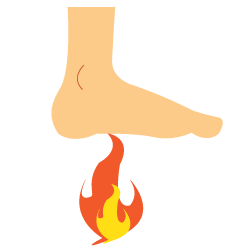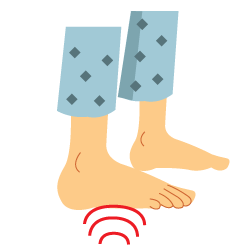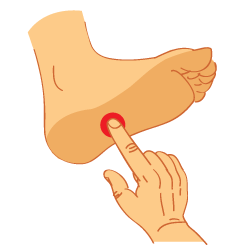
Respect The Pain
Plantar fasciitis is commonly mistaken for tarsal tunnel syndrome or arthritis, as their characteristics are very similar. As tarsal tunnel syndrome affects the nervous system, arthritis attacks the joints, and plantar fasciitis affects the plantar fascia ligament.

Know When To Slow Down
In the morning there is stiffness that gets better after a few steps, but the pain will increase over the course of the day. While you sleep the body tries to repair itself, and the plantar fascia will shorten back to the length it is supposed to be. During the first steps of the day, the healing that has taken place is being undone and the plantar fascia is stretching out, re-tearing the ligament.

Stabbing Pains
A stabbing pain on the bottom of the foot near the heel is a common symptom of trauma, either a hard landing during a sports activity or during an accident the pain can feel like a "popping" feeling in the arch of the foot, or like a hot burning sensation.

First Steps Are Painful
Pain in the morning or after rest is another symptom of plantar fasciitis. During periods of rest, your body tries to heal itself and pain is because with the first few steps the plantar fascia is being stretched too far again.

No Bending
The dorsiflexion of your toes causes great pain, because it's stretching the ligament on the bottom of your foot. Dorsiflexion is when you try to point your toes up to your shin. That extra strain is recreating tears in your fascia and not allowing it to heal properly. The same amount of pressure is applied when you try to climb stairs or stand on your toes. Excessive pressure is damaging your already tender ligaments.
